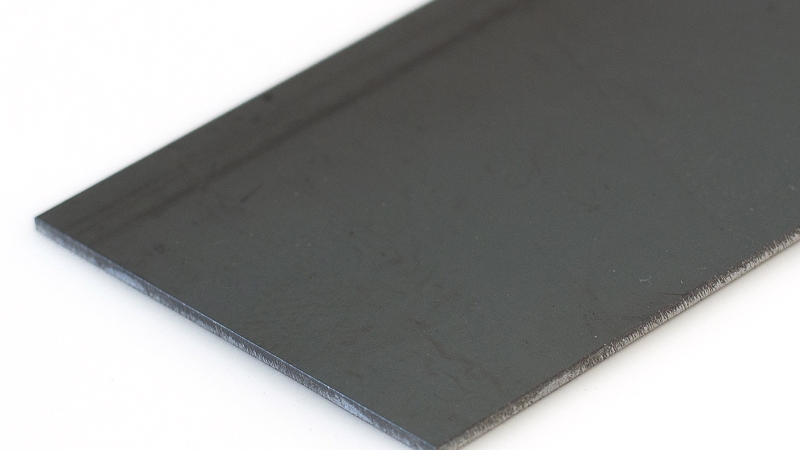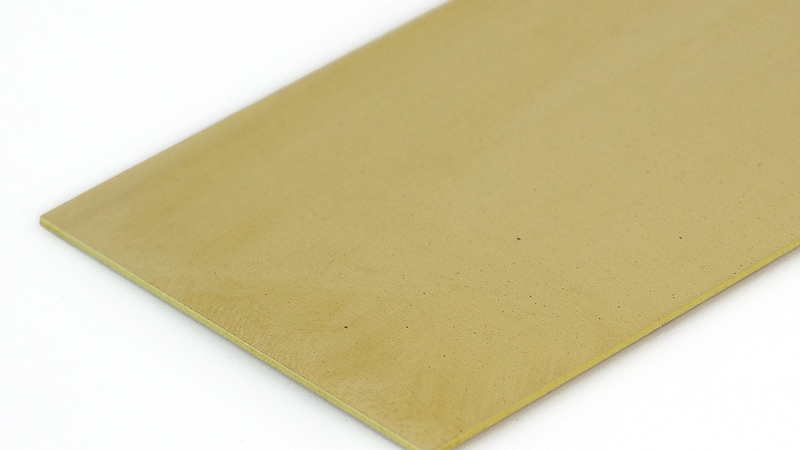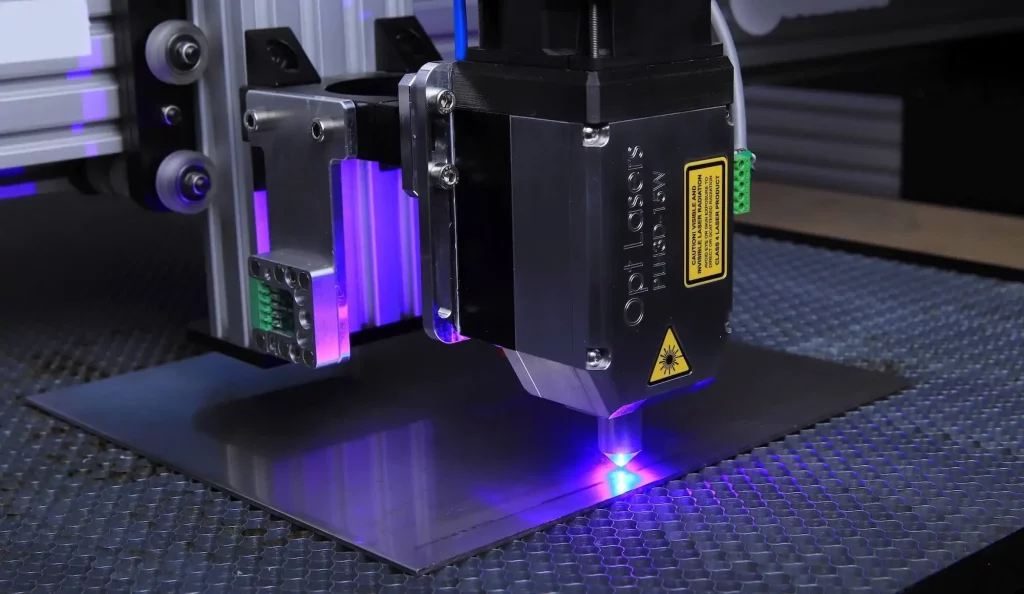
The Best Metals to Use for Sheet Metal Fabrication
When it comes to choosing a material for a sheet metal project, it is important to take into consideration the various characteristics of that material. For example, some metals may be ideal for use in structural parts thanks to their high strength, while others may be ideal for use in decorative pieces owing to their aesthetic properties.
Aluminum is a metal that stands out thanks to its ease of machinability and high strength to weight ratio. This makes aluminum ideal for those looking to prototype new concepts and designs, especially those that involve structural parts or mechanical assemblies.
However, steel is a low-cost material that makes it an ideal choice for both prototyping and mass production. The high strength of steel allows for use in structural parts and supports, while its low cost also makes it an ideal choice for mass production. This is particularly advantageous for industries such as automotive, where vehicles are manufactured in the millions.
Stainless steel is ideal for those looking for a material with high strength and resistance to corrosion. This makes stainless steel ideal for outdoor parts, including enclosures, as well as parts that may experience water or other corrosive environments.
Brass is a metal that stands out thanks to its soft ductile nature, low surface friction, naturally antibacterial properties, and corrosion resistance. This makes brass ideal for a wide range of different applications, including mechanical parts, such as gears and cogs, decorative pieces, including plaques and trinkets, and contact plates, including electrical contacts and switches.
Finally, copper is a metal that excels when it comes to its electrical and thermal properties. As such, copper is highly ideal for use in the electronics industry, including both manufacturing and deployment. Copper is also highly malleable, making it easy to shape, but this also makes it difficult to machine, which limits its use in mechanical designs.

Material Overview – Aluminium
Aluminum is a versatile metal that presents itself in many different applications due to its unique combination of properties. For one, its low density makes it ideal for weight-constrained applications whereby weight reduction is essential. A great example of this can be seen in the aerospace industry, where even saving a few grams across an entire aircraft can result in significant fuel savings, thereby reducing both operating costs and CO2 emissions.
The decent electrical and thermal conductivity of aluminum also makes it suitable for use in heatsinks and some electrical contacts. Its ability to efficiently remove heat allows for aluminum to be commonly found in power converters, radiators, and motor controllers, while its electrical conductivity makes it applicable in electrical contacts, bus bars, and even power connectors.
Aluminium’s resistance to rust also makes it ideal for outdoor and humid environments. Its corrosion resistance ensures that aluminum parts will last for extended periods of time, regardless of the conditions they are exposed to. This makes aluminum particularly useful for manufacturers of products designed for use in harsh climates, such as automotive and marine equipment.
Structural strength is another characteristic of aluminum that has seen it become a popular choice for engineers. Despite being a lightweight metal, aluminum is able to offer decent structural capabilities, making it suitable for applications that require strength-to-weight ratio. The aerospace and automotive industries are just two examples of many that take advantage of aluminum’s strength, with the aerospace industry using aluminum in fuselages, wings, and engines, while the automotive industry takes advantage of its lightweight and high-strength properties in vehicle bodies and brackets.
Finally, aluminum is easily machinable, making it simple to turn into complex 3D shapes via CNC machining. From intricate faceplates to complex brackets, aluminum can be machined into just about any 3D shape, making it an extremely versatile material. Common engineering applications that take advantage of aluminum’s machinability include enclosures, fittings, heatsinks, brackets, and structural components.

Material Overview – Steel
Steel as a material presents engineers with an excellent option for creating strong structures due to its dense and heavy composition. The addition of various elements such as carbon help to alter the properties of iron, and the resulting mixture of iron and carbon creates a material whose strength, malleability, and ductility make it ideal for use in a wide range of applications.
The high strength of steel makes it a popular choice for structural parts in buildings, vehicles, and containers, and its high-temperature resistance also makes it ideal for use in engine components such as gears and cogs. Furthermore, the ability to easily weld steel makes it simple to construct large structures from individual parts that can then be transported and assembled (such as train tracks). In fact, the ability to weld steel makes it a popular choice for construction of large complex devices such as power plants and large industrial equipment.
However, steel is not without its downsides, and one major issue that engineers have to consider is rust. Unlike aluminum and stainless steel, standard steel exposed to water will begin to rust, and this rust can lead to further issues including increased weight (as a result of water absorption), and reduced tensile strength. Thus, steel parts must either be painted to prevent water from making contact with the metal, coated with a rust-resistant layer, or kept in environments that do not include water.
The price of steel also plays an important role in engineering projects as it is an economic material. While aluminum and stainless steel may have numerous benefits, their large cost often sees them restricted to luxury items and high-end electronics. As such, steel remains a popular choice for those looking to reduce costs in designs, and its widespread availability makes it easy to source.

Material Overview – Stainless Steel
Stainless steel is a versatile metal that is widely used in many different environments thanks to its ability to resist rust. Despite the rust resistance of stainless steel comes from the very surface of the metal itself, any scratches or cuts into stainless steel do not result in rust formation as the additives in stainless steel physically migrate outwards, effectively healing the damaged surface.
The rust resistance of stainless steel makes it ideal for those looking to create products that will last for many years. This makes stainless steel particularly ideal for use in mechanical parts such as gears and cogs, as well as faceplates and enclosures that are exposed to the environment. However, the high material cost of stainless steel means that it can be extremely expensive to prototype, with the only major cost savings being realized when a part is ordered in the thousands.
Interestingly, stainless steel also has poor thermal characteristics, which makes it ideal for use in applications that need to prevent heat transfer. This is why stainless steel is commonly found in kitchenware, including pots, pans, and utensils.

Brass
Brass is a soft ductile material that presents engineers with numerous useful and unusual options when designing a product. For example, its soft nature means that brass can be easily bent into unusual shapes, making it ideal for creating decorative pieces such as metalwork and trinkets. Additionally, the malleability of brass also means that it can be easily molded, making it ideal for creating inserts and other small parts that may be difficult to produce using other materials.
The low surface friction of brass makes it ideal for use in mechanical applications involving gears and bearings. Thus, brass is commonly found in clocks, where its surface properties allow for gears to glide smoothly against each other.
However, brass also has some unusual properties that make it somewhat unique as a material. One of these is its antiseptic qualities, meaning that it has the ability to kill bacteria. Because of this, brass is commonly found in areas that see heavy traffic, such as door handles, where it can help to prevent the spread of bacteria and disease. This is especially true in controlled environments such as hospitals, where patients are particularly vulnerable to illness.
Overall, brass presents engineers with a wide range of potential materials that can help to add uniqueness to a design. From enclosures to mechanical components, brass can be used in a wide range of different ways, making it a valuable addition to any engineer’s toolkit.

Copper
Copper is a material that is truly unique in its ability to be used in a wide range of different applications. Its high electrical and thermal conductivity make it ideal for use in the fabrication of heaters, heat sinks, and bus bars that are responsible for managing large currents in electrical circuits.
At the same time, copper is also excellent in its ability to be machined and manipulated, making it ideal for use in precision applications such as solder contacts and electrical contacts. Its malleable nature also makes it easy to create flat sheets and coils, which are essential in the fabrication of components such as inductors and transformers.
While copper is highly convenient as a material, it is not without its flaws. One major drawback of copper is its sensitivity to corrosion, meaning that it must be kept away from moisture and other corrosive compounds. The green colouration that copper exhibits when corroded can also make it unsuitable for use in decorative parts, which is why alternative materials such as brass are available.
Despite its many flaws, copper remains a popular material for use in the jewelry industry thanks to its ability to be easily polished and high malleability. Copper can be beaten into extremely thin sheets and woven into intricate patterns to create decorative pieces that not only look aesthetically pleasing but also carry an element of prestige (real jewelry made from copper will typically be plated with a silver or gold coating).

Metals to Avoid
When it comes to sheet fabrication, the vast majority of metals are more than suitable, including steel, aluminum, and copper. However, there are a few that cause serious issues, with brass and gold being two that stand out.
Brass and gold are two metals that often struggle to be cut with some sheet metal fabrication techniques (such as laser cutting). Due to their highly reflectivity, laser light can bounce off the surface and make its way back into the sensitive optics, thus damaging the cutter. Such issues can be mitigated with the use of specialized blackened surfaced (to minimize the light being reflected), but these are only ever useful at preventing scattered reflections.

Thickness is also a serious concern as the thicker a piece of material is, the harder it is to cut. For example, shears are only able to cut thin sheets of metal, and laser cutters can only cut metals that are a few millimeters thick. CNCs can be used with thicker metals, but this comes at the cost of increased time, something which can be expensive. Waterjet and plasma cutters can be used with thick metals, but this comes at the cost of precision, something which is essential in precision parts.
Not all metals are suitable for all manufacturing processes, especially those that involve shearing. Soft, highly ductile metals that are partly drawn through the shearing gap can result in a razor-sharp edges. As a result, such edges are extremely dangerous to handle, with a single slip being more than capable of serious bodily harm.

Key Takeaways
When it comes to engineering projects, having access to a wide range of different materials is essential. This is especially true when prototyping as this allows engineers to tinker with different designs to see how various materials behave. However, no one material is best for everything, every project, and every application meaning that engineers need to carefully consider what material they choose. For example, soft metals such as copper can be ideal for low-friction applications such as motor contacts and battery terminals, but would be impractical for structural parts in a building due to the weak strength of copper. On the flip side, strong metals such as steel are ideal for structural parts, but are often too rigid for electrical contacts meaning that they can weld to neighboring parts with great difficulty.
Thanks to Ponoko’s rapid manufacturing services, engineers can quickly prototype all major metals currently available in the market including steel, aluminum, copper, and brass. These metals are also available in a wide range of thicknesses allowing for prototypes to be made to production standards while also allowing for engineers to explore thickness-dependent properties.
While the wide range of materials available through Ponoko can be overwhelming, the variety of manufacturing techniques offered by Ponoko helps to narrow down the choice. For example, laser-cut metals are ideal for creating high-precision 2D parts that require minimal machining, while 3D printed metals are ideal for creating 3D structures that can be later machined and smoothed.
Overall, Ponoko offers engineers a wide range of prototyping options for all major metals currently in the market, allowing engineers to explore different materials, manufacturing techniques, and finally, select the best fit for their project.


